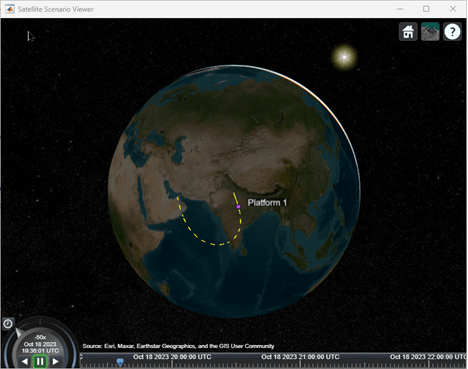platform
Syntax
Description
platform(
adds scenario,trajectory)Platform objects to
satellite scenario using the trajectory from the geoTrajectory system
object.
platform(
adds scenario,positiontable)Platform
objects to the satellite scenario from position data. The position data is in
meters.
platform(
adds a scenario,positiontable,velocitytable)Platform
objects to the satellite scenario from position and velocity data. The position data is
in meters and the velocity data is in meters per second.
platform(
adds a scenario,positiontimeseries)Platform
object to the satellite scenario from position (in meters) data specified in the
positiontimeseries (timeseries object).
platform(
adds a scenario,positiontimeseries,velocitytimeseries)Platform object to the
satellite scenario from position (in meters) data specified in the
positiontimeseries (timeseries object) and velocity (in
meters/second) data specified in the velocitytimeseries (timeseries object).
platform(___, specifies
options using one or more name-value arguments in addition to any input argument
combination from previous syntaxes. Name,Value)
pltf = platform(___)Platform object
platform to the satellite scenario and returns a vector of handles to these platforms.
Note
When the AutoSimulate property of the satelliteScenario is false, SimulationStatus is NotStarted while calling
platform. You can use the restart
function to reset SimulationStatus to
NotStarted. Note that calling restart will
erase the simulation data.
Examples
Input Arguments
Name-Value Arguments
Output Arguments
Version History
Introduced in R2024a

